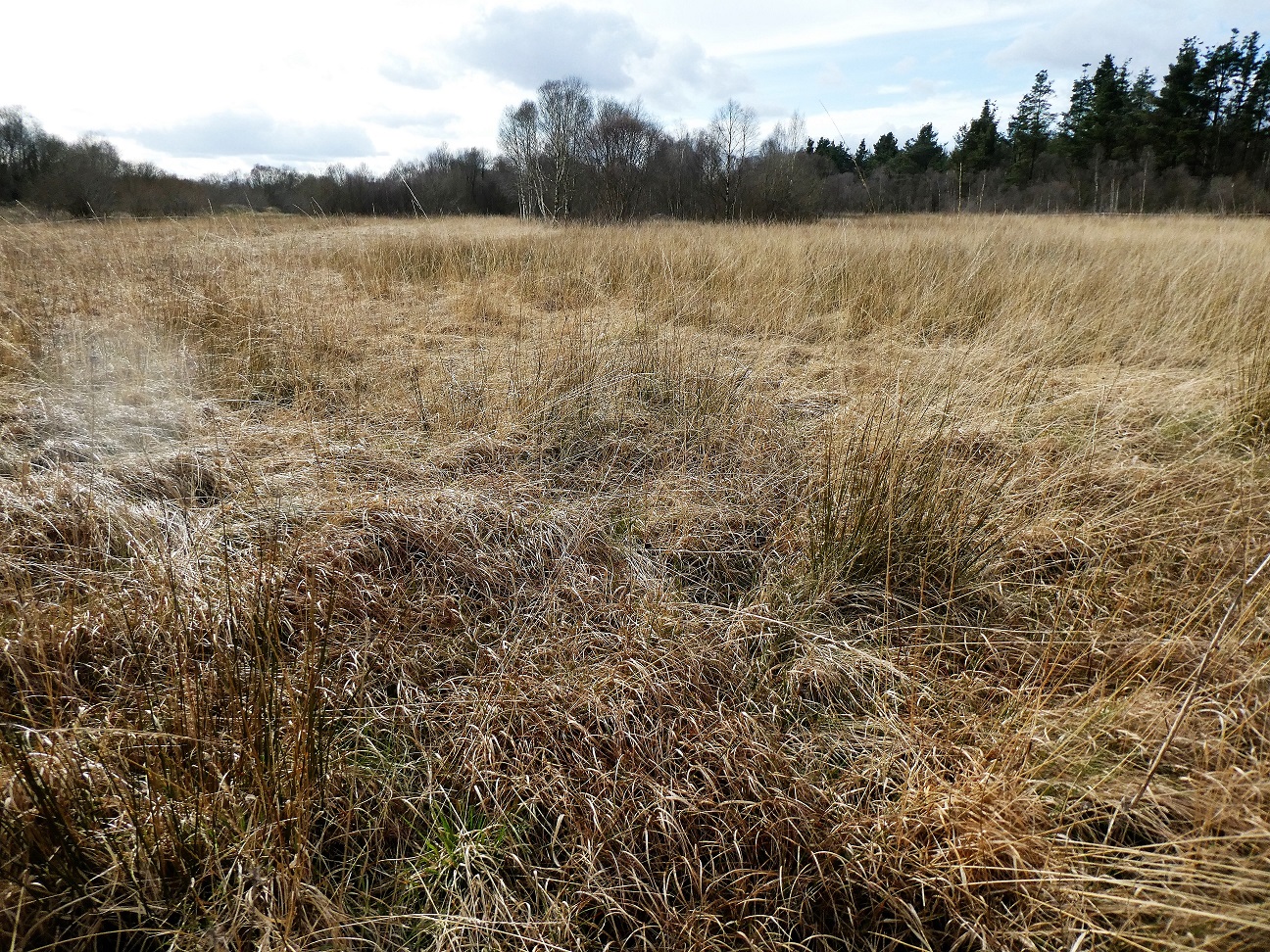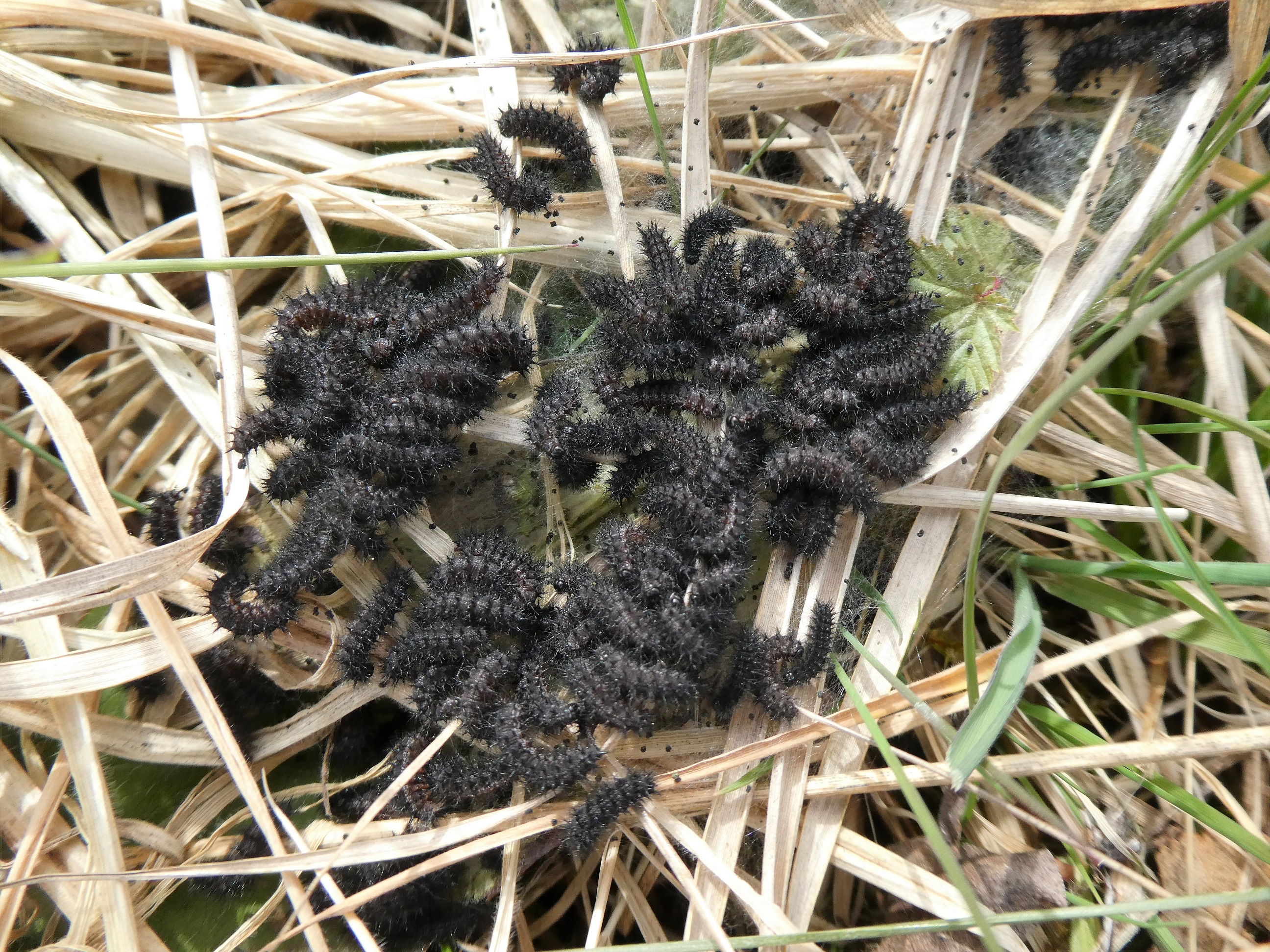
Purple Moor-grass is the dominant grass over much of Butterfly Conservation Ireland’s reserve at Lullybeg, County Kildare. In autumn, the grass changes to a bright bleached colour. This makes the site especially wintry in appearance.
However, spring is stirring on this apparently dead grassland. And it is this dead grass litter that helps kick-start life into action. At this time of year, this grass dries out and heats up very quickly. Warmth rises from this straw-like grass. And caterpillars depend on this for their development.
Caterpillars feed on live leaves, including larvae that feed on grasses. However, eating food and digesting it are very different processes. A caterpillar must raise its body temperature to activate the digestive enzymes.
In the photos below two species are basking on the leaf litter. The massed larvae are the caterpillars of the rare and beautiful Marsh Fritillary butterfly, a beautifully patterned creature whose habitat enjoys protection under European Union legislation. One of the reasons it is so rare is that it must have very specific habitat conditions. Among its requirements is a high density of the caterpillar foodplant, Devil’s-bit Scabious growing among vegetation that contains dry leaf litter in spring. Lullybeg ticks this box.
The site is very carefully managed to ensure that these conditions are maintained. Today, I counted the Marsh Fritillary nests (the larvae live in groups from the time they hatch in July until late in April). Some of these nests, happily, hold hundreds of little caterpillars which help to heat each other when they sun themselves in a bristly black mass. We have a thriving population here, thanks to all the support from our members. It is great to know that we can make a difference to rare species. We are delighted to be able to report that 49 nests of the Marsh Fritillary caterpillars have made it through the winter. Thank you!
The single caterpillar is the larva of one of our largest moths, the Fox Moth. This caterpillar will not feed again. It spends some of the spring basking on dry grass before pupating. It flies in May and June.
Other larvae present at Lullybeg, such as the Small Heath butterfly’s caterpillar, also need dry, dead leaf litter among its green food. Feeding only in daylight, this caterpillar also shares the need for warmth and dryness.
So while the photo appears to show a ‘dead’ scene, it is anything but!
A final piece of news: the Great-spotted Woodpecker has arrived at Lullybeg. A bird was drumming on a tall tree. What a lovely way to announce spring.



